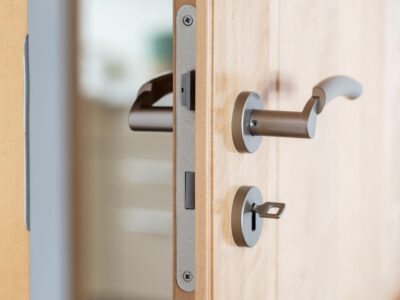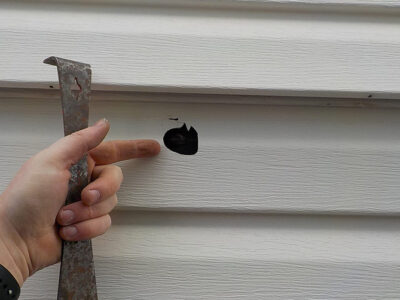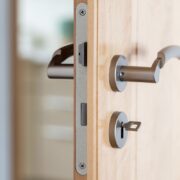Nestled along the shores of Lake Champlain, Burlington, Vermont, boasts scenic landscapes and vibrant seasons. However, with its diverse climate, residents face unique challenges, one of which is the persistent threat of seasonal mold growth. Mold can thrive in various conditions, and understanding how Burlington’s seasons contribute to its development is crucial for homeowners. In this comprehensive guide, we will explore the common causes of seasonal mold in Burlington and provide actionable mold prevention and remediation tips to ensure a mold-free home throughout the year.
Understanding Burlington’s Seasonal Mold Dynamics
Burlington experiences four distinct seasons, each bringing its own set of conditions that can contribute to mold growth. From the cold winters to the warm summers, understanding the nuances of each season is key to effective mold prevention.
- Winter:
Burlington’s winters are cold and snowy. While the lower humidity levels during winter might seem less conducive to mold growth, the season poses a different risk. Poor insulation and ventilation can lead to condensation on windows and walls, creating pockets of moisture ideal for mold to take hold.
- Spring:
As winter snow melts, the transition to spring brings increased moisture. Damp basements, improperly ventilated areas, and lingering winter moisture create an environment where mold can proliferate. Spring showers and fluctuating temperatures further contribute to the risk.
- Summer:
Burlington’s warm and humid summers provide an ideal breeding ground for mold. High humidity levels, combined with occasional heavy rains, create opportunities for mold to flourish, especially in areas with poor ventilation. Basements and bathrooms become particularly vulnerable during this season.
- Fall:
The transition from summer to fall can bring rain and cooler temperatures. Falling leaves and organic debris can contribute to mold growth if not properly managed. As outdoor conditions change, it’s essential to be proactive in preventing mold from taking root in and around the home.
Prevention Strategies for a Mold-Free Home
- Control Indoor Humidity:
Maintaining indoor humidity levels below 60% is crucial for mold prevention. Investing in dehumidifiers, especially in basements and other damp areas, helps regulate humidity and create an environment less favorable for mold growth.
- Proper Ventilation:
Ensure proper ventilation in areas prone to moisture, such as bathrooms and kitchens. Use exhaust fans and open windows when possible to promote air circulation, reducing the likelihood of stagnant, humid conditions that encourage mold.
- Regular Maintenance:
Conduct routine inspections of your home, checking for leaks, water damage, and areas of condensation. Address any issues promptly to prevent the onset of mold growth. Regular maintenance is the first line of defense against mold.
- Effective Landscaping:
Maintain proper grading around your home to direct water away from the foundation. This reduces the risk of water seepage into basements and crawl spaces. Well-maintained landscaping also promotes good drainage, preventing excess water accumulation.
- Waterproofing:
Consider waterproofing measures for basements, including sealing foundation cracks, installing sump pumps, and applying waterproof coatings to walls. These steps create a barrier against water intrusion, reducing the potential for mold growth.
- Monitor and Repair Roof Leaks:
Regularly inspect your roof for leaks or damaged shingles. Address any issues promptly to prevent water infiltration, which can lead to attic mold growth. A well-maintained roof is crucial for keeping your home dry and mold-free.
- Fall Clean-Up:
Clear gutters of leaves and debris to prevent water accumulation, which can contribute to mold growth. Trim overhanging branches to reduce shade and improve airflow around the home. Fall clean-up is essential in preventing mold-friendly conditions.
- Proper Insulation:
Ensure your home is adequately insulated to prevent condensation on walls and windows during the winter months. Proper insulation helps maintain a consistent indoor temperature and reduces the risk of mold in hidden corners.
Remediation Tips for Burlington Residents
Despite taking preventive measures, mold can still find its way into homes. If you discover mold in your Burlington residence, here are effective remediation tips:
- Identify the Source:
Before starting remediation, identify and address the source of moisture. Whether it’s a leaky roof, plumbing issue, or poor ventilation, eliminating the source is crucial to preventing future mold growth.
- Personal Protective Equipment (PPE):
Wear appropriate PPE, including gloves, masks, and protective clothing, to minimize exposure to mold spores during the remediation process. Safety should be a top priority when dealing with mold.
- Isolate Affected Areas:
Use plastic sheeting to isolate the affected areas and prevent mold spores from spreading to other parts of the home. Containment is vital to controlling the spread of mold during the remediation process.
- Ventilation:
Ensure proper ventilation during remediation by using fans and opening windows. This helps disperse mold spores and improves air circulation. Adequate ventilation is crucial for the effectiveness of the remediation process.
- Mold Removal:
Clean and remove mold from surfaces using appropriate cleaning agents. For large or extensive mold infestations, it’s advisable to seek professional assistance. Thorough removal is essential to prevent the recurrence of mold growth.
- Address Porous Materials:
Porous materials like drywall and carpeting may need to be removed if extensively contaminated by mold. Replace these materials to prevent the recurrence of mold growth and ensure a clean living environment.
- Professional Assistance:
For severe mold infestations or situations where health is a concern, seek the services of professional mold remediation experts. They have the expertise and equipment to handle complex cases safely and effectively.
Conclusion
Burlington’s seasonal mold challenges demand a proactive approach from homeowners. By understanding the unique conditions each season presents, implementing preventative strategies, and promptly addressing any mold issues, residents can create a healthier and mold-resistant living environment. A mold-free home not only protects the structural integrity of the property but also safeguards the well-being of those who call Burlington home. Embracing these prevention and remediation tips ensures that Burlington residents can enjoy their homes year-round without the worry of seasonal mold taking hold.













Comments